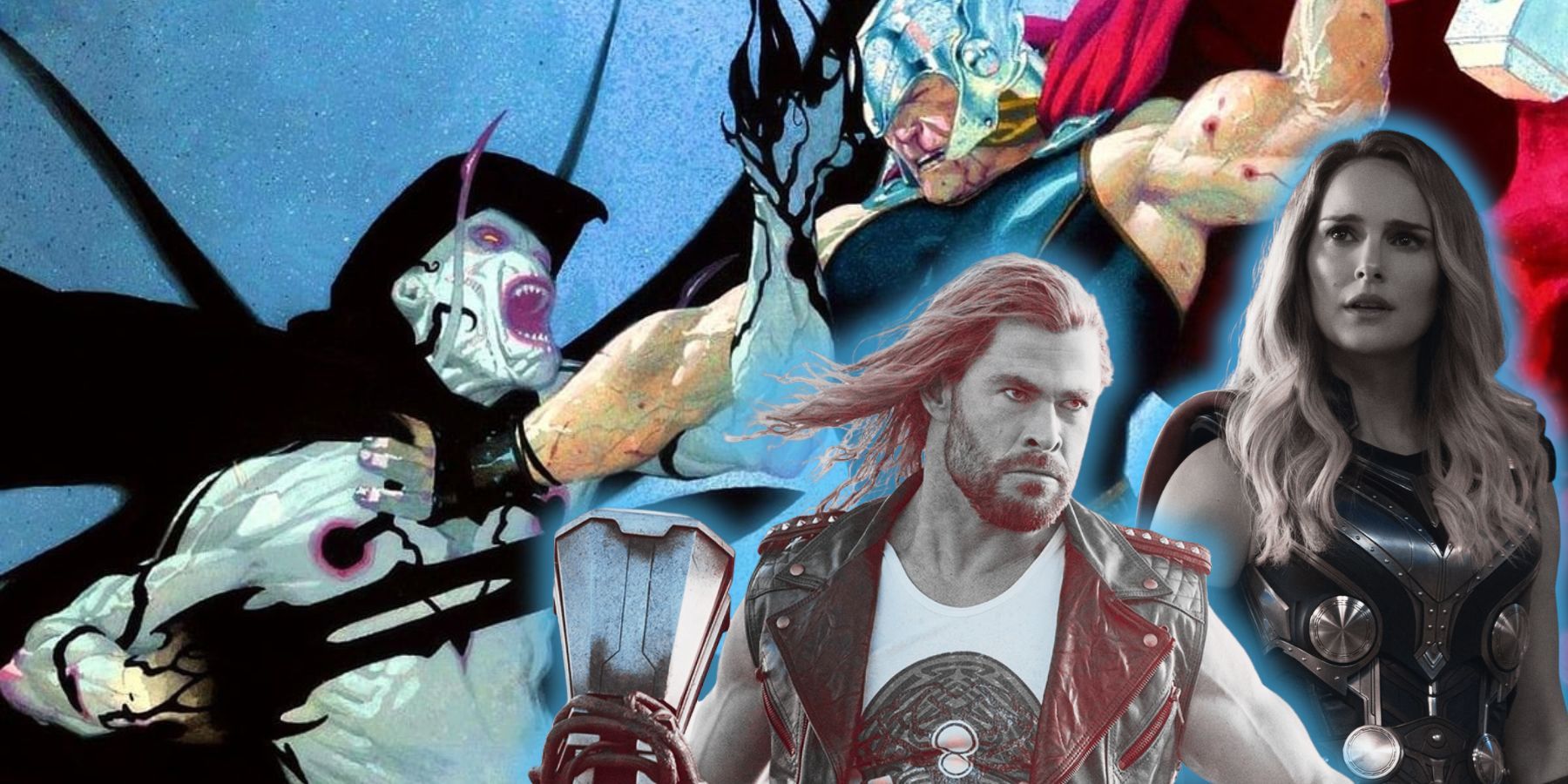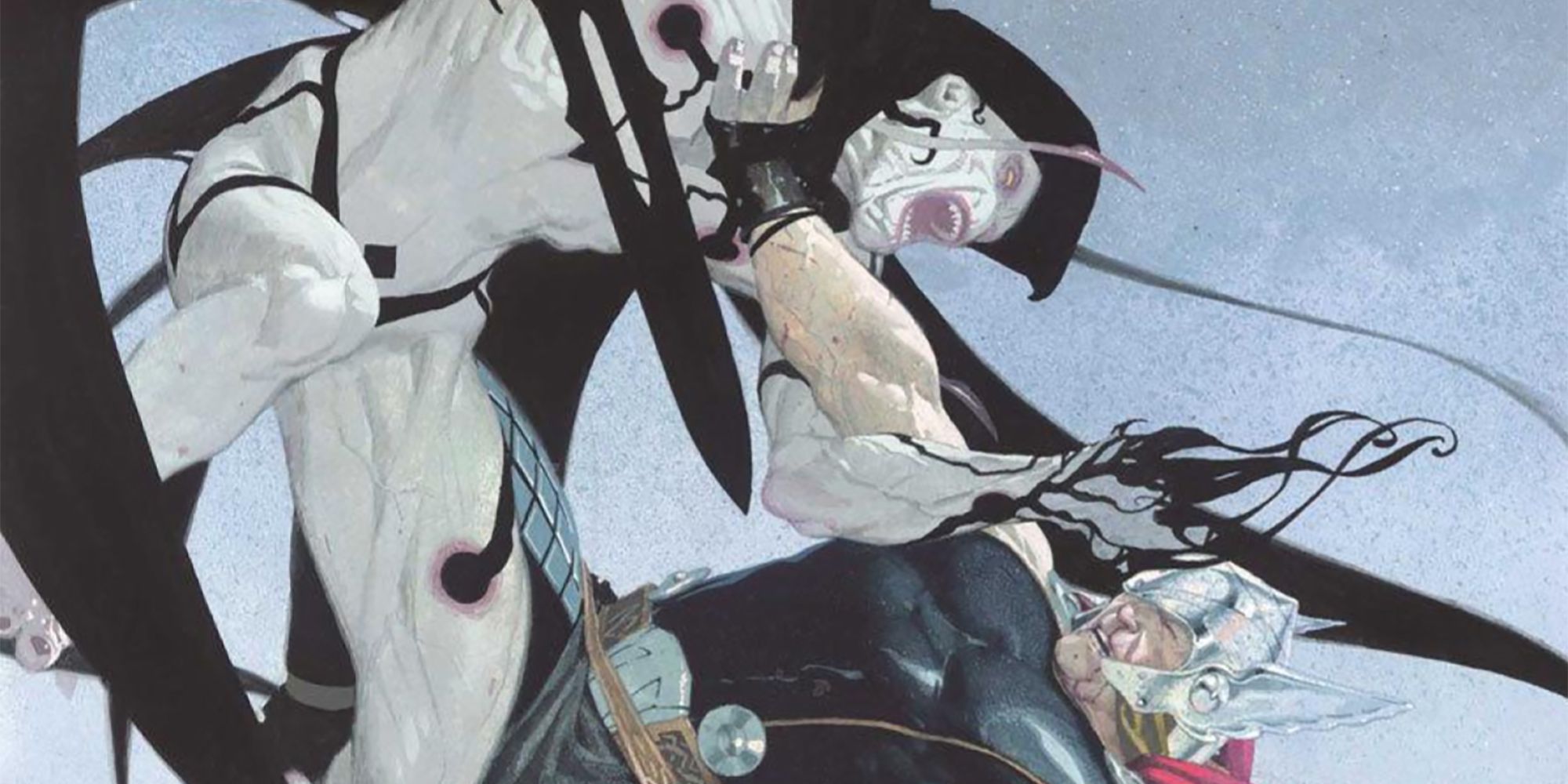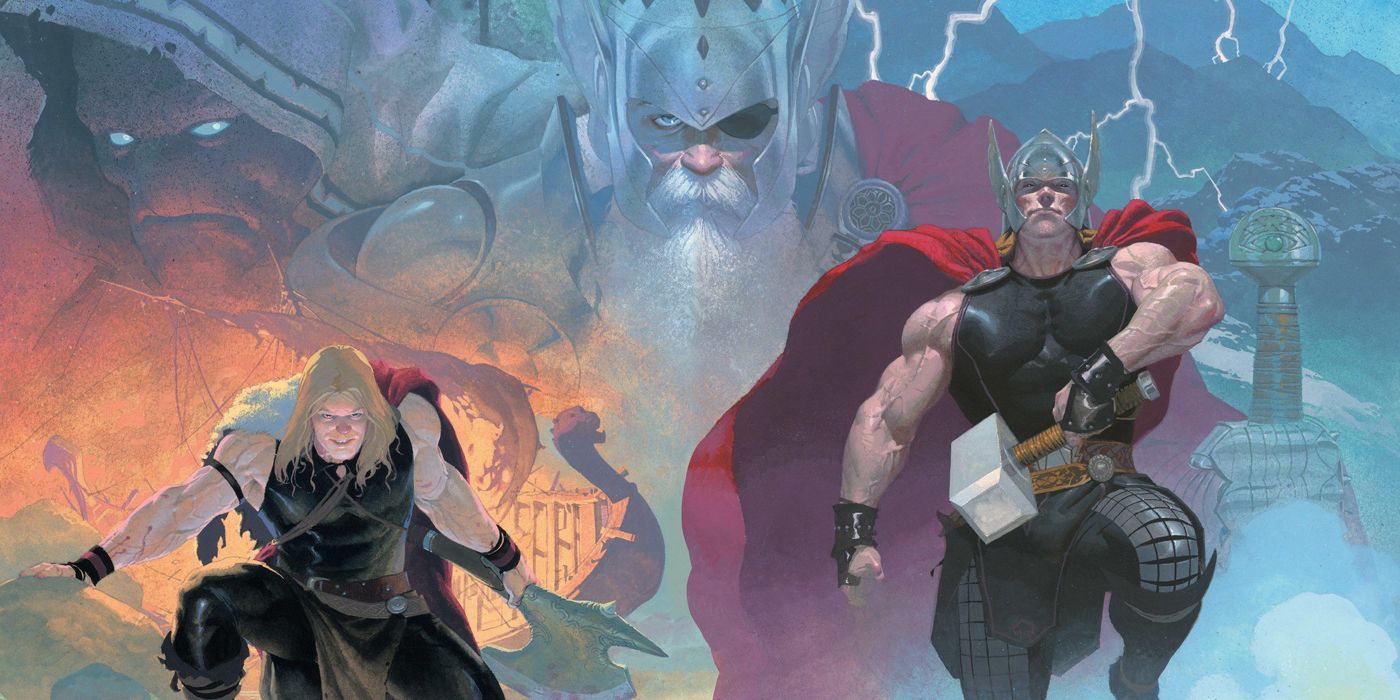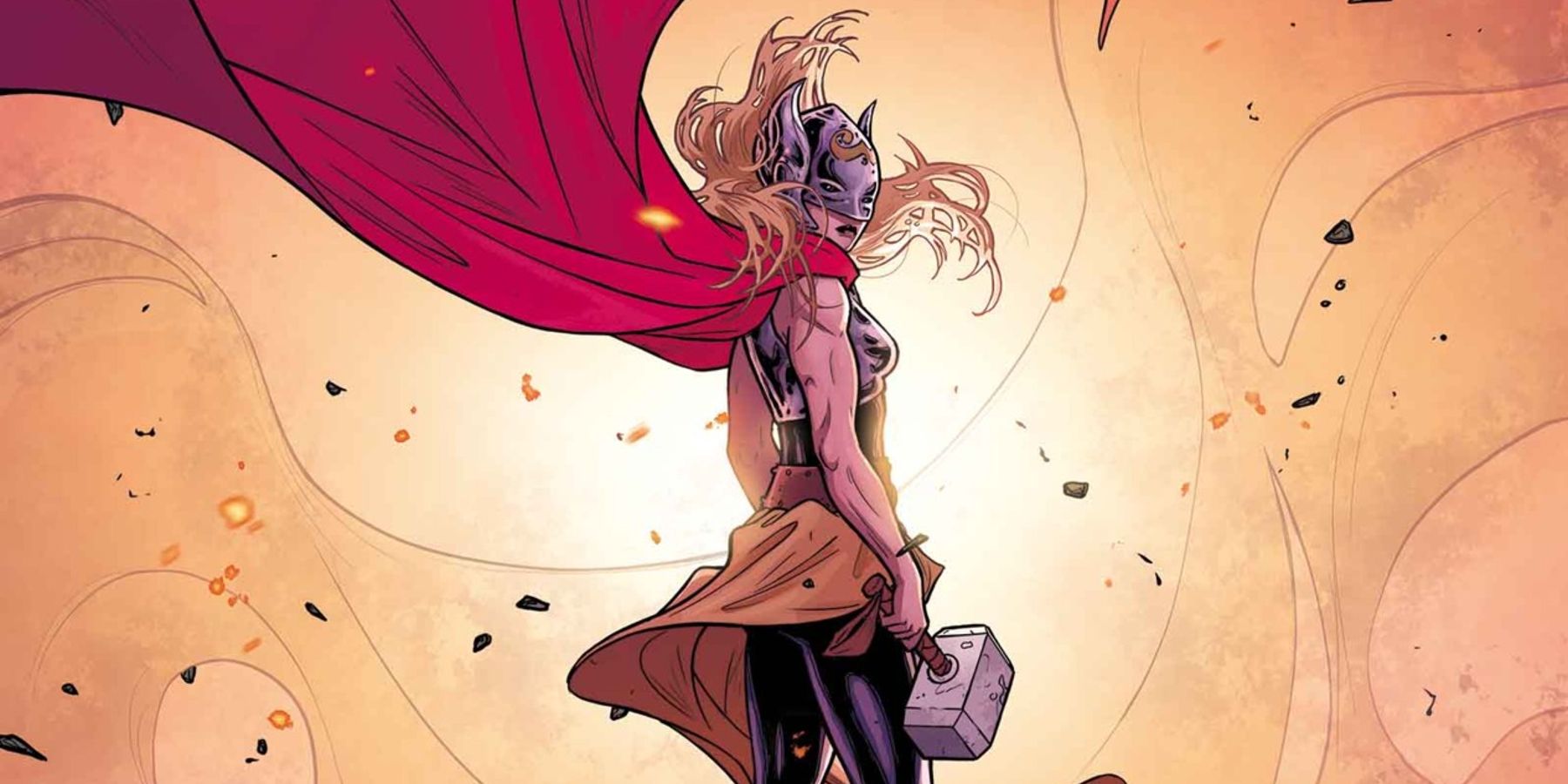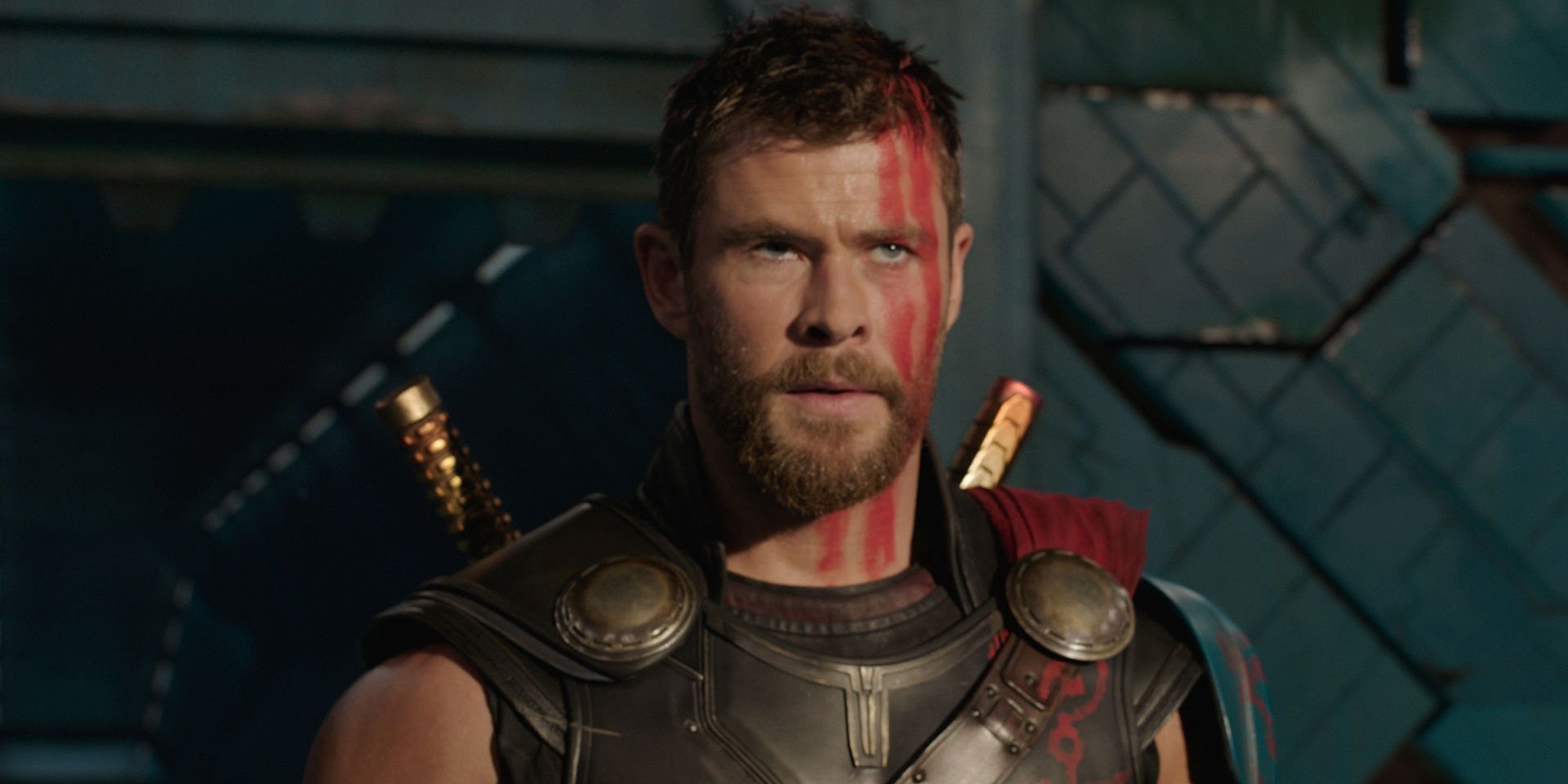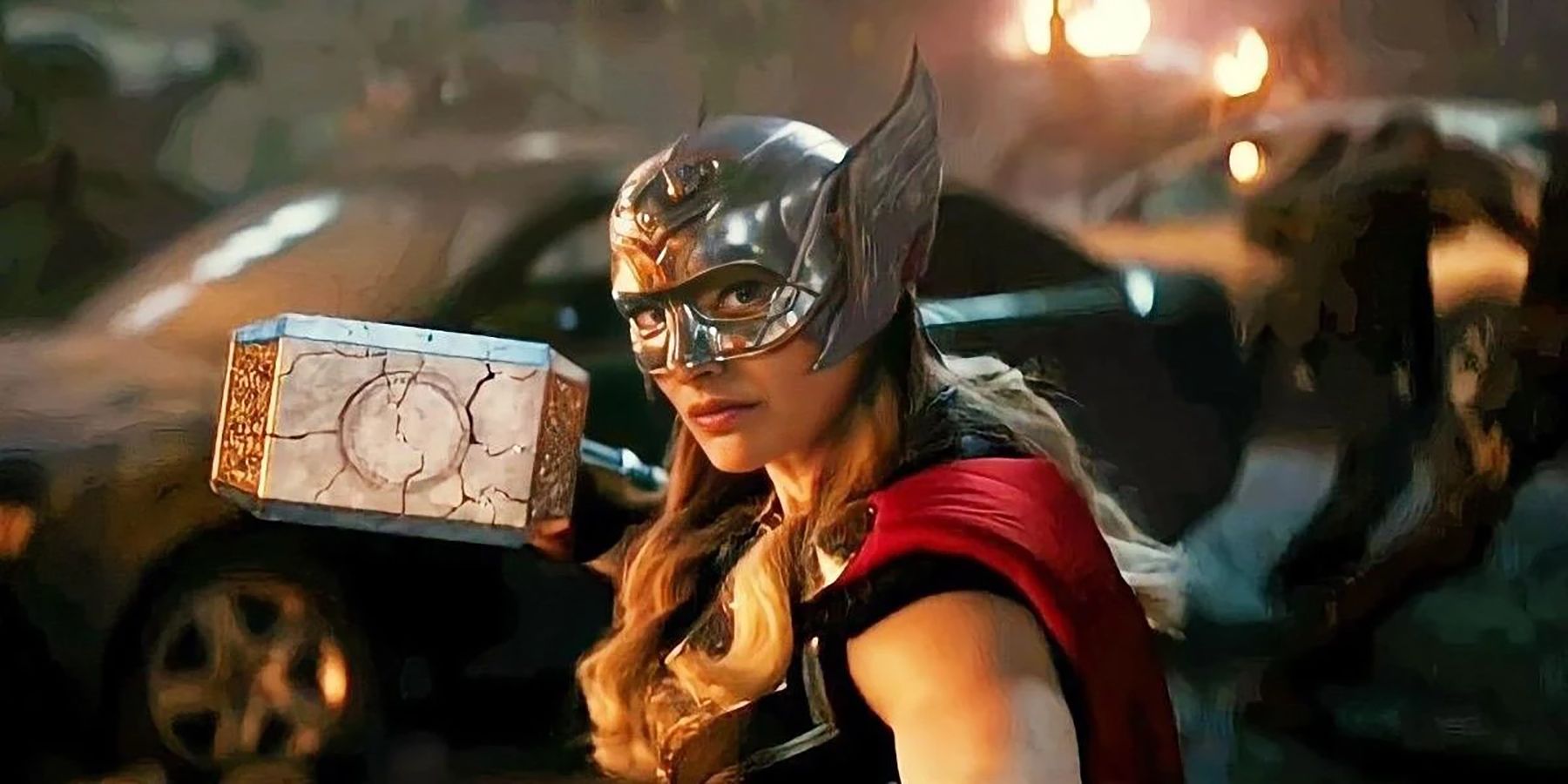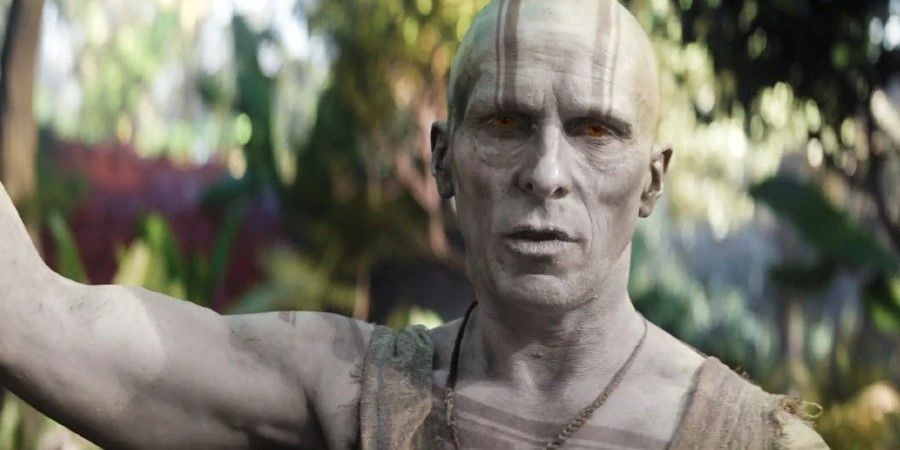Previously best known for indie hits like the charmingly off-beat What We Do in the Shadows (2014), Taika Waititi put his writer-director talents on full display for fans of the Marvel Cinematic Universe (MCU) with 2017’s Thor: Ragnarök. One of the most universally well-received MCU films, Thor: Ragnarök breathed new life into not just the Thor films, but the God of Thunder himself (Chris Hemsworth), too.
It’s no surprise that Marvel Studios kept the Oscar-winning Waititi (Jojo Rabbit) on board for Thor: Love and Thunder, the fourth film in the Norse mythology-inspired series. Early on, Marvel announced that Natalie Portman, who played an astrophysicist Jane Foster in the first two Thor films would return — this time as the hammer-wielding Mighty Thor. Hemsworth’s Thor, undergoing a kind of identity crisis, would find purpose while facing off against Christian Bale’s Gorr the God Butcher.
Set in Phase 4 of the MCU — the first part of the franchise’s Multiverse Saga — Love and Thunder is a post-Avengers: Endgame (2019) film that suffers from not really having a defined place in the next emerging saga of the MCU. A kind of standalone victory lap for Hemsworth and Waititi, Thor: Love and Thunder not only fails to live up to the very high bar set by Ragnarök, but it squanders its source material — Jason Aaron's acclaimed runs, Thor: God of Thunder and The Mighty Thor.
What Is Thor: Love and Thunder Based On?
First introduced in the Silver Age of Comic Books in 1962, Thor Odinson, a founding member of the Avengers, takes inspiration from the Norse god he's named after. Able to fly and manipulate weather thanks to his trusty hammer, Mjolnir, the incredibly strong god was reestablished as one of Marvel Comics' top heroes by writer Jason Aaron. For him, reinventing Thor for the 2010s meant making the character more human, more grounded.
In his Silver Age runs from Stan Lee and Jack Kirby, Thor is anything but relatable. But Jason Aaron’s take views the hammer-wielding god as a flawed person first — and a near-unstoppable force second. While Taika Waititi’s Thor: Love and Thunder takes inspiration from various parts of Thor’s decades-spanning history, it borrows two of Jason Aaron's most iconic contributions to the Thor canon: Gorr the God Butcher and The Mighty Thor, the Jane Foster incarnation of the titular hero.
Why Is Jason Aaron's Thor Run So Impactful?
In 2012, Jason Aaron and artist Esad Ribic’s Thor: God of Thunder #1 introduced readers to Gorr, a character who asks a deeply important question: do gods deserve to exist? Gorr’s challenge to Thor’s very identity frames Aaron’s run, and, arguably, the villain becomes Thor’s most formidable adversary ever. Even when Thor thinks he’s defeated Gorr, the God Butcher clings to life, sustained by his desire to eradicate the universe's gods.
When Thor is young, he confronts the Necrosword-wielding Gorr for the first time, but Aaron’s creation reappears at every stage of the God of Thunder’s life. A manifestation of Thor’s self-doubt, Gorr is persistent. Before their initial encounter Thor never questioned his worthiness or godly powers, but Gorr plants seeds of doubt that haunt the Asgardian for the rest of his days.
But Gorr is just one of Aaron’s incredibly influential creations. Working with artist Russell Dauterman, Aaron penned one of the most revolutionary storylines in the Thor canon by introducing The Mighty Thor — a mystery woman who appears during Thor Odinson's absence and takes on the god's mantle. Capable of wielding Mjolnir, Jane Foster — Thor's ex and cancer patient — discovers that she can transform into the God of Thunder. However, the stronger she grows as The Mighty Thor, the weaker Jane's human form becomes, since the transformation process stunts her chemotherapy treatment.
At a time when Odinson has decided he isn't deserving, Jane interrogates the idea of worthiness from a different angle than, say, Gorr. The hammer chooses a human — one living with terminal cancer. Jane's godly gifts aren't the result of some inherent superpowers or Asgardian status. While Gorr believes gods shouldn't exist at all, Jane Foster's time as The Mighty Thor proves that gods aren't the only ones capable of greatness. In wielding Mjolnir and taking on the title of Thor, Jane proves there's more to the mantle — and to Odinson as an individual — than the story readers are familiar with.
Why Was Ragnarok So Much Better Than Love and Thunder?
Audiences and critics alike wanted more of what made Taika Waititi’s Thor: Ragnarok so successful, from its nuanced story of a peoples’ displacement to its signature comedy and memorable performances. Tasked with bringing Thor’s story, which started in 2011, full circle, Love and Thunder has to be many things. While it builds on its predecessor's achievements, the film can't quite sustain the high-energy blend of humor, action, and heart.
For example, the chilling backstory for Bale’s character, Gorr, sets a compelling stage, but then Thor’s stint with the Guardians of the Galaxy, rather jarringly, crops up to eat away at the runtime. The MCU’s interconnectedness isn’t always a good thing, especially in a film that feels so separate from the rest of Phase 4. As ungrounded and aimless as Thor himself, Love and Thunder doesn't know how to wrap up Thor's story (and Hemsworth's contract) in a way that works well within the tedious confines of the (very plotted) larger MCU.
Is Mighty Thor different From Thor? How The MCU Wastes Jane Foster’s Story
So, what was Thor: Love and Thunder trying to achieve, and why didn’t it work in comparison to the comics? Underneath all that flashy action and comedy, the fourth Thor is about loss and love. At this point, Thor's lost everything, from his mother and brother, Loki (Tom Hiddleston), to his ancestral home of Asgard. His found families, the Avengers and the Guardians of the Galaxy, aren't the right fit. And Thor's also still mourning the loss of Mjolnir — the thing that quite literally made him feel worthy of both power and love.
When Thor sees Jane Foster, the love of his life, it's a gut-punch — even more so because she's dressed as the God of Thunder and besting Gorr's minions. Here, Jane also has a terminal diagnosis, and while Mjolnir does reforge and bind itself to her (thanks to Thor's protective enchantment from years ago), it doesn't magically heal her. Thor’s loss of Mjolnir — and the way it chooses his ex-girlfriend over him — is approached with a funny rom-com sensibility. But, underneath that, Mjolnir is still a manifestation of Thor’s very core — his sense of self, but also his love for Jane.
While the question of worthiness remains compelling, Love and Thunder, frustratingly, de-centers Jane Foster from the narrative. Instead of tapping into what made Jason Aaron’s The Mighty Thor unforgettable, the MCU turns Jane's story into a plot device. She's an example for Thor, existing to afford the aimless god an opportunity to question, learn, and grow. Thor might find a new lease on life, but Jane's story ends in death.
What The MCU’s Love and Thunder Adaptation Was Missing From The Comics
In Love and Thunder, the ever-faithful Gorr feels that his all-powerful gods toyed with him, leading to a devastating betrayal and the loss of his daughter. For gods, loss and life aren't so precious; humans are like blips on their immortal radars, scrambling around for their amusement. Given everything, it's not surprising that Gorr thinks people are better off without these hedonistic, careless gods.
The God Butcher's love for his daughter pushes him to prevent future loss, though his means are destructive and violent. On the other hand, Thor approaches loss differently; it's an inevitability, but new and old loves sustain him. The dynamic is compelling, the stakes are high, and Bale’s performance is appropriately visceral and unsettling. So, why doesn't it work? In the end, Love and Thunder tries to turn a loss into a new love — quite literally, and in more ways than one. But the whole thing doesn't hold the same weight as the version of the Gorr vs. Thor arcs in Aaron's comics.
With too much to juggle, Love and Thunder leaves viewers little time to sit with Gorr's heavy, nuanced challenge to Thor's very existence. Part of what makes Gorr so haunting is that his drive to eradicate the gods pretty much keeps him alive until the end of the universe. He is unkillable, because the challenge he presents — undermining the very nature of Thor’s being and the right of gods to exist — cannot be forgotten.
The film adaptation introduces Gorr as a storied figure, but he's also a new threat. Instead of focusing on the way Gorr pushes Thor to rethink everything — and during the height of an all-consuming identity crisis — the film dilutes Jason Aaron's exploration of worthiness, and muddles what it's trying to say by cramming both Gorr and The Mighty Thor into a single runtime. Funnily enough, Thor: Love and Thunder might see the titular hero traversing space, but it doesn't give the story the space and time it needs to mine all the nuance from Jason Aaron's Thor comic book runs.

